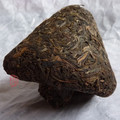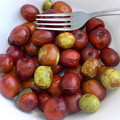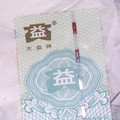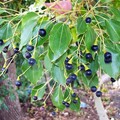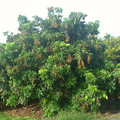To the village of ethnic minorities in Yunnan to visit the old tea tree
Pu-erh tea
„This process was first developed in 1972 by Menghai Tea Factory and Kunming Tea Factory] to imitate the flavor and colour of aged raw pu-erh, and was an adaptation of wet storage techniques being used by merchants to falsify the age of their teas. Mass production of ripened pu'er began in 1975. It can be consumed without further aging, though it can also be stored to "air out" some of the less savoury flavors and aromas acquired during fermentation.“
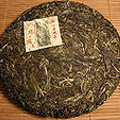
Quotes Tags: Pu-erh, Shu - Ripe Puerh
- Discussion: 0 comments
- Write a comment
Teas - Pu-erh
2016 Chawangpu Yibang Manguishan Xiao
 0 reviews
0 reviewsLast winter was unusually cold. Many people thought they would have a good harvest the...
2005 Nan Nuo Shan Raw Chi Tse Bing Cha
 1 review
1 reviewThis is a classic and old style cake from Nannuoshan Tea Factory which was renamed as...
2006 Haiwan Organic Pasha Tea Brick 500g
 1 review
1 reviewThis brick was stored in Kunming since 2006, it was made by using the best raw...
2008 Xiaguan FT Xizi (Happy) Tuo Cha Raw
 1 review
1 reviewXizi tuo is one of famous Xiaguan Fei Tai products. Used high quality blend of 1-3...
2002 Yi Wu "Ancient Spirit" Raw Pu-erh
 2 reviews
2 reviewsMade entirely from spring 2002 material, this Banna wetter stored tea cake sports a...
2005 Nannuoshan TF Menghai Raw Puerh Cake
 1 review
1 reviewThis is a classic Menghai spring blended cake from Nannuoshan Tea Factory which was...
Quotes - Pu-erh
„nei xiang;内香 - refers to a kind of fragrance that is not 'yang' or obvious. Often not perceived till after the tea has been swallowed. Sometimes also 幽香 - you xiang.“
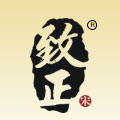
Quotes Tags: China, Experiencing tea, Pu-erh
Video - Pu-erh
Theme
Teas
HeKai 2013 - blind tasting set 2
 1 review
1 reviewnicely balanced bitterness with a breze of sweetness, beautiful honey-fruity aroma, pleasant and pure...
2011 Mengmao Lao Shu Ye Sheng Xiao Bing 100g
 1 review
1 review2011 Spring harvest. This material come from Baoshan area, 2600 meters high mountain closed with Mengmao...
2012 Menghai "Spring of Menghai" Raw Pu-erh
 1 review
1 reviewPremium blend of first flush of spring tea * Batch 201This is a newer Menghai release, first...
Tea by region
We will help you with tea selection.
Do you like quality loose tea?
We will help you to find the right one for you. Be inspired by tea ratings of other tea lovers. Rating stars could help you.


Review your cup of tea.
Review the tea you are drinking and help other tea lovers to find the right cup of tea.






 Shops
Shops Share on Facebook
Share on Facebook






